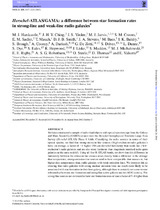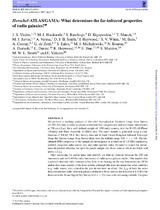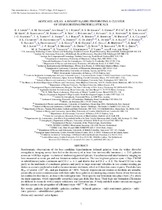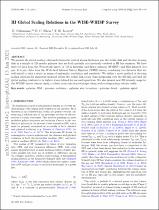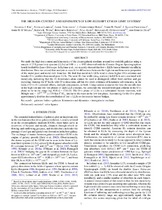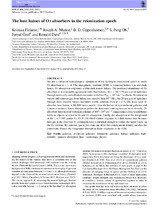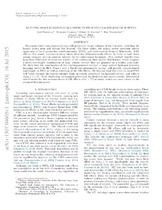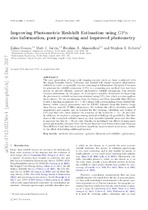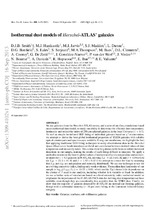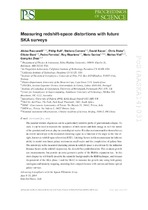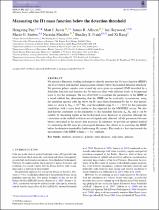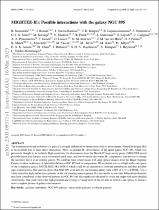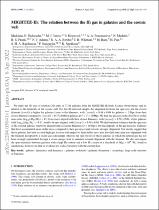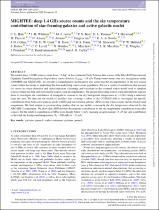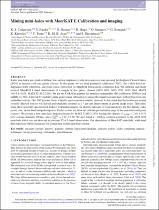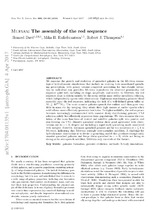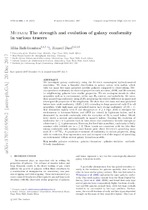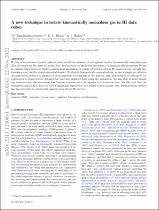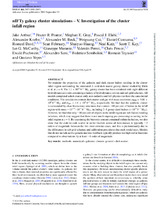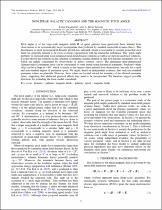Browsing by Subject "Galaxies"
Now showing items 41-60 of 87
-
Herschel-atlas/Gama: a difference between star formation rates in strong-line and weak-line radio galaxies
(OUP, 2013)We have constructed a sample of radio-loud objects with optical spectroscopy from the Galaxy and Mass Assembly (GAMA) project over the Herschel Astrophysical Terahertz Large Area Survey (Herschel-ATLAS) Phase 1 fields. ... -
Herschel-ATLAS/GAMA: What determines the far-infrared properties of radio galaxies?
(OUP, 2013)We perform a stacking analysis of Herschel Astrophysical Terahertz Large Area Survey (H-ATLAS) data in order to obtain isothermal dust temperatures and rest-frame luminosities at 250 µm (L250), for a well-defined sample ... -
Herschel-ATLAS: A binary HyLIRG pinpointing a cluster of starbursting protoellipticals
(American Astronomical Society, 2013)Panchromatic observations of the best candidate hyperluminous infrared galaxies from the widest Herschel extragalactic imaging survey have led to the discovery of at least four intrinsically luminous z = 2.41 galaxies across ... -
Hi global scaling relations in the wise-whisp survey
(Oxford University Press, 2021)We present the global scaling relations between the neutral atomic hydrogen gas, the stellar disk and the star forming disk in a sample of 228 nearby galaxies that are both spatially and spectrally resolved in HI line ... -
The high-ion content and kinematics of low-redshift lyman limit systems
(The American Astronomical Society, 2013)We study the high-ion content and kinematics of the circumgalactic medium around low-redshift galaxies using a sample of 23 Lyman limit systems (LLSs) at 0.08 < z < 0.93 observed with the Cosmic Origins Spectrograph on ... -
The host haloes of O I absorbers in the reionization epoch
(Oxford University Press, 2013)We use a radiation hydrodynamic simulation of the hydrogen reionization epoch to study OI absorbers at z ∼ 6. The intergalactic medium (IGM) is reionized before it is enriched; hence, OI absorption originates within dark ... -
Hunting down horizon-scale effects with multi-wavelength surveys
(American Astronomical Society, 2015)Next-generation cosmological surveys will probe ever larger volumes of the universe, including the largest scales, near and beyond the horizon. On these scales, the galaxy power spectrum carries signatures of local primordial ... -
Improving photometric redshift estimation using GPz: size information, post processing and improved photometry
(Oxford University Press, 2017)The next generation of large-scale imaging surveys (such as those conducted with the Large Synoptic Survey Telescope and Euclid) will require accurate photometric redshifts in order to optimally extract cosmological ... -
Isothermal dust models of Herschel-ATLAS galaxies
(Oxford University Press, 2013)We use galaxies from the Herschel-ATLAS survey, and a suite of ancillary simulations based on an isothermal dust model, to study our ability to determine the effective dust temperature, luminosity and emissivity index of ... -
Measuring redshift-space distortion with future SKA surveys
(Proceedings of Science, 2014)The peculiar motion of galaxies can be a particularly sensitive probe of gravitational collapse. As such, it can be used to measure the dynamics of dark matter and dark energy as well the nature of the gravitational laws ... -
Measuring the HI mass function below the detection threshold
(Royal Astronomical Society, 2020)We present a Bayesian stacking technique to directly measure the H I mass function (HIMF) and its evolution with redshift using galaxies formally below the nominal detection threshold. We generate galaxy samples over several ... -
Mightee-h i: Possible interactions with the galaxy NGC 895
(Oxford University Press, 2023)The transformation and evolution of a galaxy is strongly influenced by interactions with its environment. Neutral hydrogen (H i) is an excellent way to trace these interactions. Here, we present H i observations of the ... -
MIGHTEE-Hi: The relation between the Hi gas in galaxies and the cosmic web
(Oxford University Press, 2022)We study the 3D axis of rotation (3D spin) of 77 Hi galaxies from the MIGHTEE-Hi Early Science observations, and its relation to the filaments of the cosmic web. For this Hi-selected sample, the alignment between the spin ... -
Mightee: Deep 1.4 ghz source counts and the sky temperature contribution of star-forming galaxies and active galactic nuclei
(Oxford University Press, 2023)We present deep 1.4 GHz source counts from ∼5 deg2 of the continuum Early Science data release of the MeerKAT International Gigahertz Tiered Extragalactic Exploration survey down to S1.4GHz ∼15 μ Jy. Using observations ... -
Mining mini-halos with MeerKAT I. Calibration and imaging
(Oxford University Press, 2023)Radio mini-halos are clouds of diffuse, low-surface brightness synchrotron emission that surround the Brightest Cluster Galaxy (BCG) in massive cool-core galaxy clusters. In this paper, we use third generation calibration ... -
Mufasa: The assembly of the red sequence
(Oxford University Press, 2017)We examine the growth and evolution of quenched galaxies in the Mufasa cosmo- logical hydrodynamic simulations that include an evolving halo mass-based quench- ing prescription, with galaxy colours computed accounting ... -
MUFASA: The strength and evolution of galaxy conformity in various tracers
(Oxford University Press, 2017)We investigate galaxy conformity using the Mufasa cosmological hydrodynamical simulation. We show a bimodal distribution in galaxy colour with radius, albeit with too many low-mass quenched satellite galaxies compared ... -
A new technique to isolate kinematically anomalous gas in HI data cubes
(Oxford University Press, 2023)H I line observations of nearby galaxies often reveal the presence of extraplanar and/or kinematically anomalous gas that deviates from the general circular flow. In this work, we study the dependence of kinematically ... -
nIFTy galaxy cluster simulations – V. Investigation of the cluster infall region
(Oxford University Press, 2016)We examine the properties of the galaxies and dark matter haloes residing in the cluster infall region surrounding the simulated cold dark matter galaxy cluster studied by Elahi et al. at z = 0. The 1.1 × 1015 h−1M ... -
Nonlinear galactic dynamos and the magnetic pitch angle
(American Astronomical Society, 2015)Pitch angles p of the large-scale magnetic fields B of spiral galaxies have previously been inferred from observations to be systematically larger in magnitude than predicted by standard mean-field dynamo theory. ...

